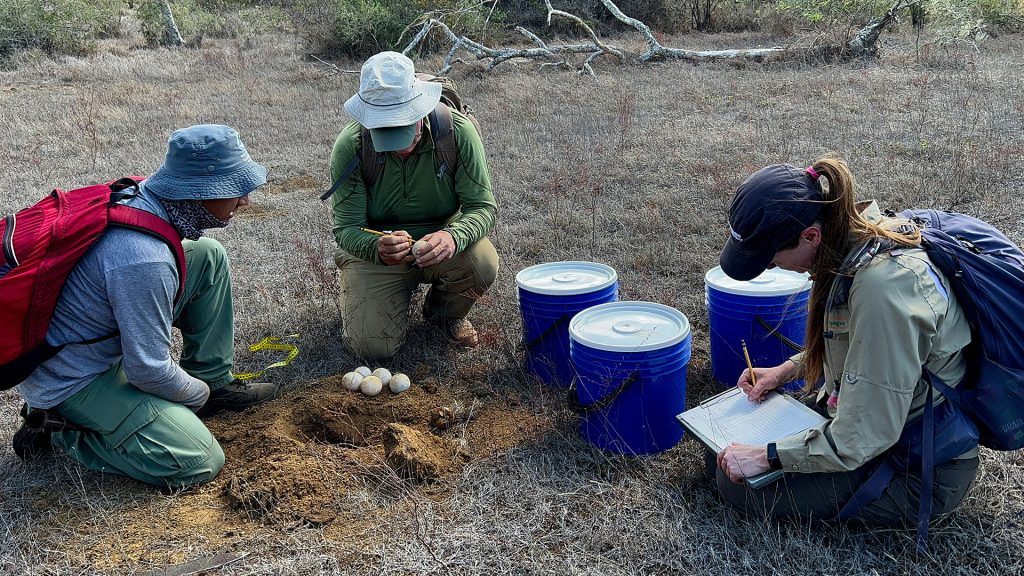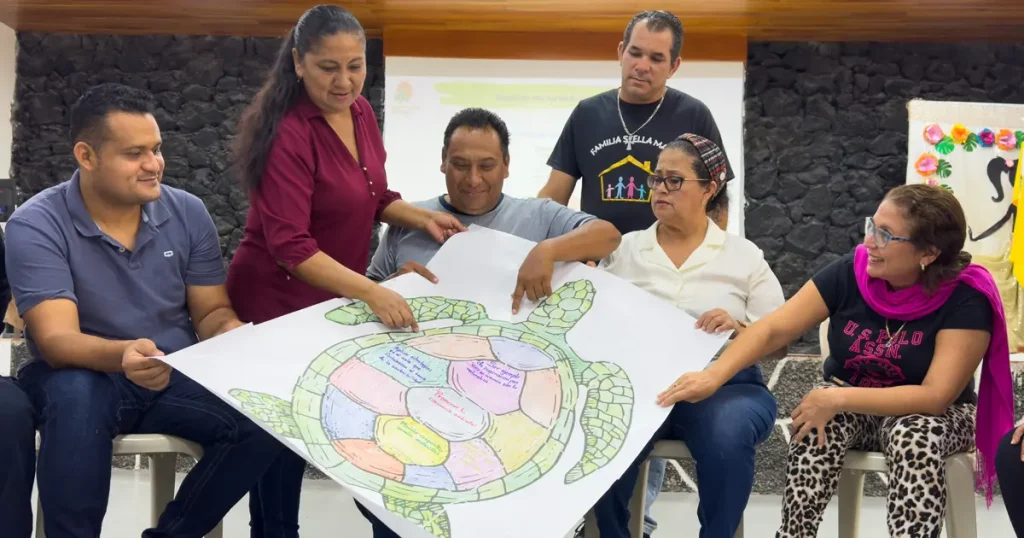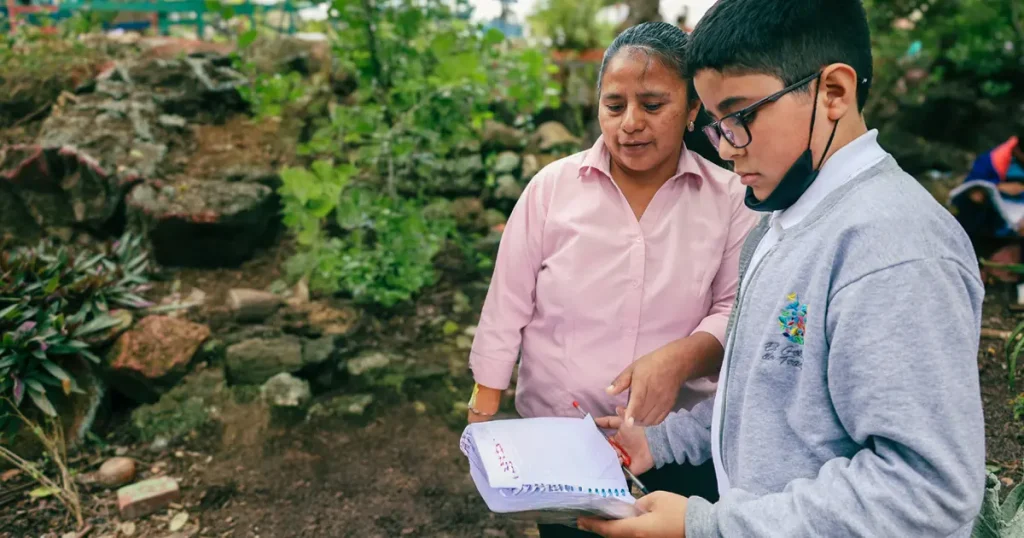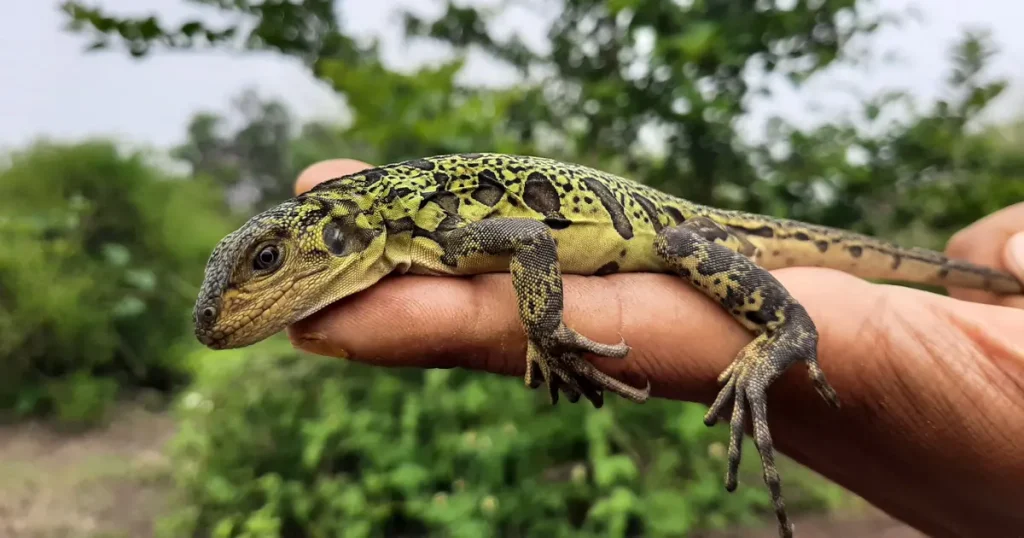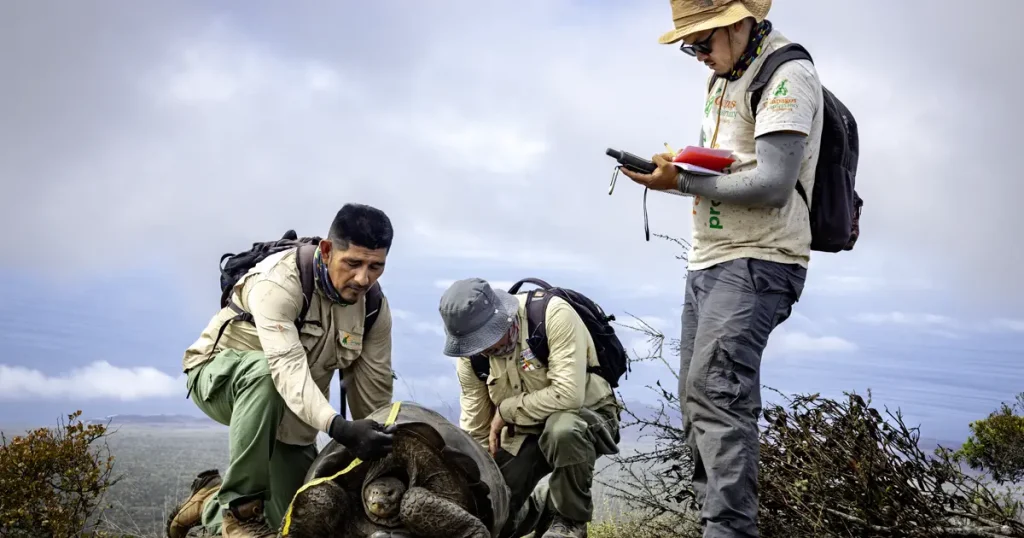New Expedition Sparks Hope for Santiago’s Giant Tortoises
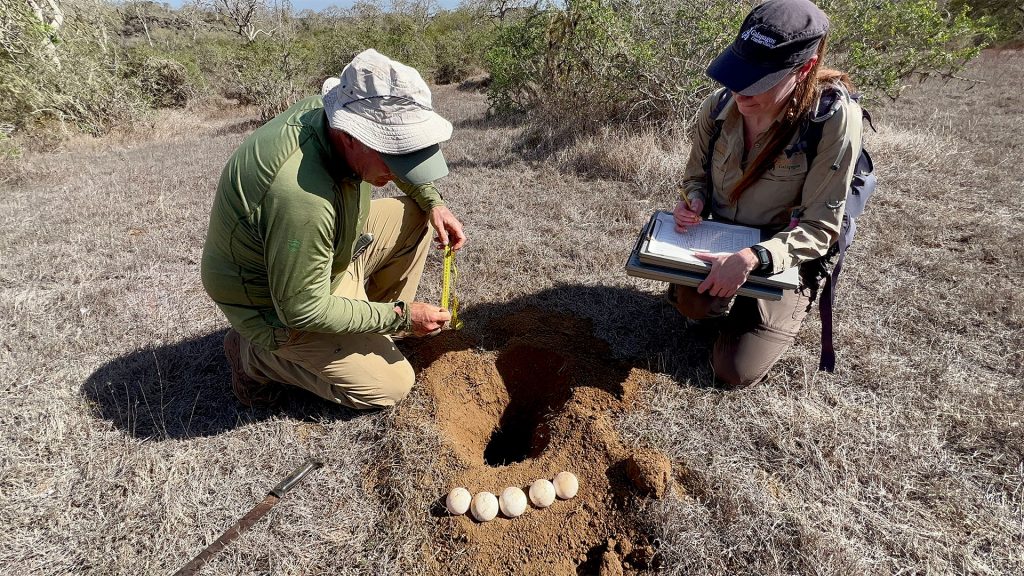
Our top priority is to conserve and restore giant tortoise populations in the Galápagos Archipelago. These incredible creatures are both impressive and ecologically important as primary herbivores and seed dispersers, both of which are critical processes for maintaining the ecosystems’ ability to provide essential benefits to both humans and the environment. Protecting these species is not only an environmental commitment, but also an urgent necessity to conserve the resilience and ecological integrity of this special place.
We remain vigilant about the critical situation facing certain giant tortoise species through our scientific research and conservation efforts, focused on the 12 species of giant tortoises that currently inhabit Galápagos. Among them is the Chelonoidis darwini from Santiago Island, which has between 1000 to 1200 individuals, mostly males. According to the IUCN Red List of Threatened Species, this species has been listed as Critically Endangered since 2015.
Eggs and Hatchlings Collection and Transfer
A team of scientists from Galápagos Conservancy and park rangers from the Galápagos National Park Directorate recently embarked on an expedition to the giant tortoise nesting areas on Santiago Island. The primary goal was to collect eggs and recently hatched tortoises for transfer to the Breeding and Rearing Center on Santa Cruz Island, where egg hatching success and hatchling survival rates are significantly improved. During this operation, 169 eggs and 112 hatchlings were successfully transported.
Each egg brought to the Breeding Center represents a significant step forward in the conservation of giant tortoises. As a result, the transfer of eggs and hatchlings is done by air, adhering to strict safety standards to ensure the species’ survival. Helicopter transport allows us to overcome logistical challenges, significantly increasing hatching rates and hatchling survival.
Long -Term Recovery
When these young tortoises will be returned to their home island to support the C. darwini population in Santiago after they have grown to the proper size and physical condition to survive in their natural habitat. This should take about five years. This step is critical in restoring Santiago’s giant tortoise population to its historical size and distribution range.
Our General Director, scientist Washington Tapia, emphasized that now, more than ever, it is urgent to undertake research and management actions. “Similar to what has been achieved with other tortoise species like Española, even in more critical situations, we aim to outpace the specter of extinction and contribute to the restoration of the population, thus aiding in the ecological restoration of the island,” he stated.
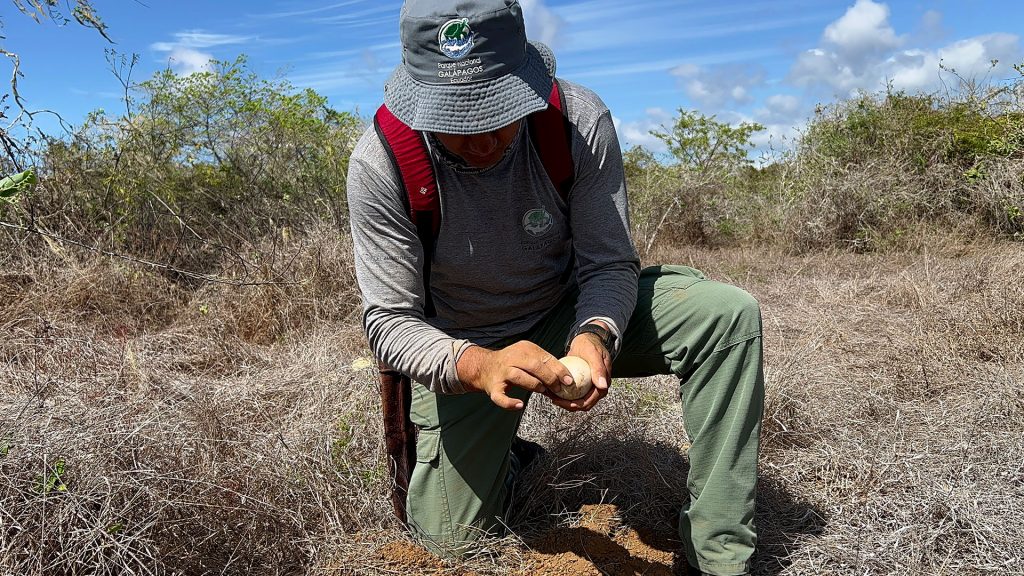
The collaboration between Galápagos Conservancy and the Galápagos National Park Directorate, made possible by the generous contributions of conservation-minded donors, is an essential component of the archipelago’s strategies for ecosystem restoration and the recovery of giant tortoise populations.
